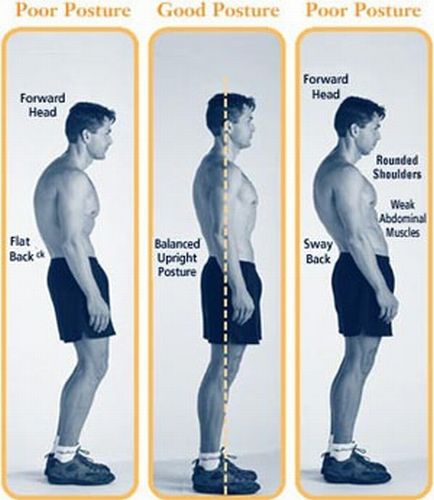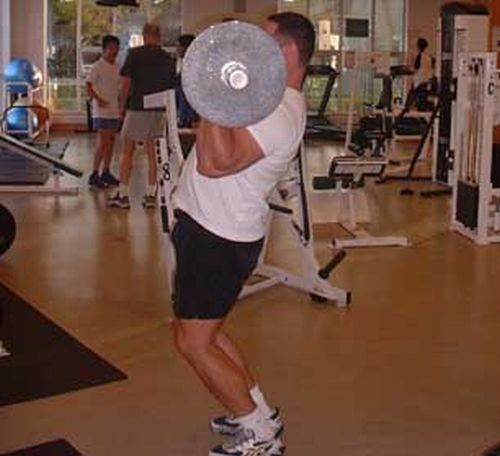
Poor posture (sitting, standing, or lying down) makes the back more vulnerable to injuries and back pain; weak or shortened muscles contribute to poor posture. Fatigue also contributes to poor posture and back pain.
Poor Posture and Back Pain
When the spine is not in proper alignment the muscles, ligaments and spinal joints all are under extra stress. Muscle strain is the most common cause of back pain due to poor posture.
Discs can also suffer from poor posture. When the spine is in proper alignment, the cushioning, shock absorbing discs that are in between the vertebrae are not overly stressed and not as subject to injury.
Lower back pain is the most common back pain caused by poor posture, as the lower back supports most of the weight of the body. However, poor posture can also cause upper back pain, especially in those who slouch. Neck pain is also common.
Strong Muscles for Proper Posture
Muscles support the spine. A weakness in any of the muscles that support the spine makes it difficult to maintain proper posture. Poor posture is a common cause of back pain due to muscle strain, especially lower back pain.
– Exercises that strengthen and stretch the muscles that support the spine help maintain proper posture. See Back Exercises.
The back muscles, ligaments & discs are under extra stress when the spine is not in proper alignment. Strong muscles help keep the spine in proper alignment and prevent back pain. Strong muscles also prevent the spine from extending beyond its normal range of motion, which is essential to protecting the ligaments and disks from injury.
Flexible Muscles for Proper Posture
Tight, shortened muscles in the back or buttocks can throw the spine out of alignment and cause back pain. Stretching the back muscles is important for good posture, but other muscles, such as shortened hamstrings (muscles in back of thigh), can also affect spinal alignment.
What is Good Posture?
Many people remember being told ‘Stand up straight’ or ‘Don’t slouch’ when they were children. Like ‘eat your vegetables’, this is still good advice.
The spine, however, is not actually straight. The healthy spine curves inward at the neck, outward at the chest, and inward at the lower back. These two curves balance each other to ensure that the pull of gravity is evenly distributed. If the curves of the spine are increased or decreased the muscles, ligament and joints have to work harder to support the weight of the head and body. This leads to fatigue, strain and back pain.
When standing, the center of the head, the shoulders, center of the body, knees and feet should line up vertically.
COMMON POSTURE ERRORS
Common posture errors of the lower back that cause lower back pain:
Swayback – an increase in the natural inward curve of the lower back.
Flattened back – a decrease in the natural inward curve of the lower back.
Common posture error of the upper back that cause upper back pain:
Rounded or hunched shoulders – an increase in the natural outward curve of the upper back.
Common posture error that causes neck back pain:
Head Forward – ears in front of the shoulders, caused by a bent over position or hunching the shoulders.
The Lower Back Posture Errors
The positioning of the pelvis controls the curve of the lower back. The pelvis should be in a neutral position. If the pelvis tilts forward, sway back results (the natural inward curve of the lower back is increased). If the pelvis tilts backward, flattened back results (a decrease in the natural inward curve of the lower back). Control of the pelvis is key in keeping the lower spine in proper alignment and preventing lower back pain.
Like the spine, the pelvis is supported by muscles of the back, and abdomen and buttocks and strengthening these muscles helps maintain good posture and prevent back pain.

